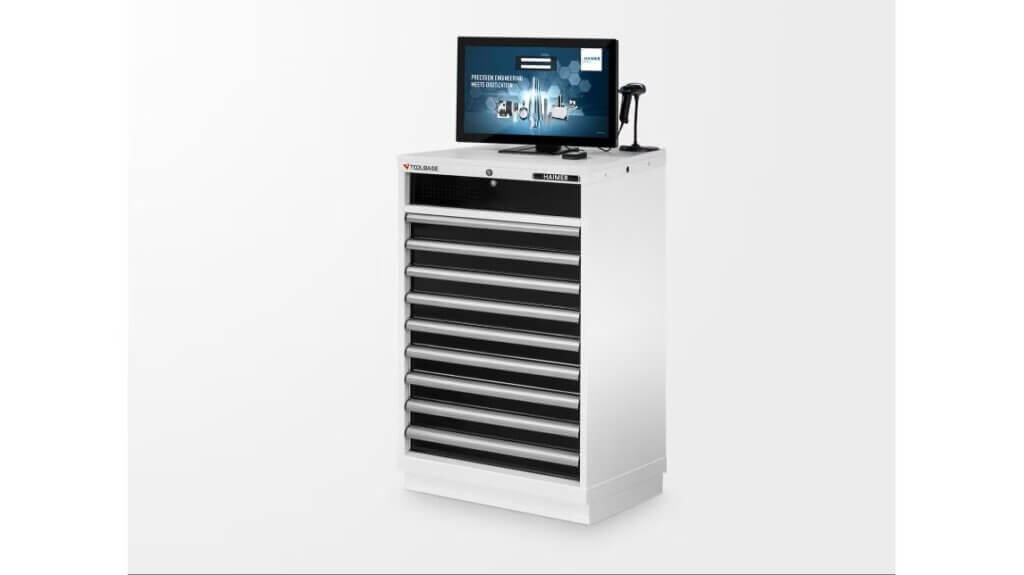Frankfurt am Main, July 17, 2025. – More so than almost any other issue, digitalization in production stands for technological change and gives rise to news and trends, including at EMO Hannover 2025. All this, despite the fact that digitalization of machine tools is hardly a new topic. It began with the first computer numerical control (CNC) system in the 1960s. That actually makes it older than the world’s leading trade fair for production technology which celebrates its 50th anniversary this year. Whether it is Industry 4.0, the Internet of Things or AI that are causing a stir among experts – one question is ever-present: How can companies find the easiest and most economically sensible path to digitalization?
“It is always a good idea for companies to first gain an overview of which applications are relevant for them,” explains Dr. Markus Heering, Executive Director at EMO organizer VDW (German Machine Tool Builder’s Association). According to him, one of the first and most important steps for any factory is to create transparency in production through targeted recording and exchange of data.
Data recording and networking made easy
The benefits to be gained from this data are apparent when taking a look at the digital solutions offered by many machine manufacturers. Machines themselves are complex mechatronic systems which are now fully digitalized. This takes center stage when building a self-contained data space (private cloud, intranet) that is limited to the relevant company. Open, standardized data interfaces are required to ensure that new machine tools as well as existing tools, machines from different manufacturers and even robots can communicate with each other and exchange data in production. The global initiative umati (universal machine technology interface) will once again demonstrate the benefits of standardized machine networking at EMO Hannover 2025.
The most important insight is that evaluating large quantities of data makes it possible to optimize production processes, identify errors early on and utilize resources more efficiently. This increases competitiveness on the global market significantly.
Current applications and trends
A few application cases are likely to draw particular attention at EMO this year. Digitalization and networking promote the customization of products and adaptation to rapidly changing market requirements. With methods such as mass customization, companies can manufacture small batches of customized products without losing the efficiency of series production.
Digitalization can also support sustainability, as Professor Dr. Christian Brecher, Executive Director of the Fraunhofer Institute for Production Technology IPT in Aachen, Germany, recently highlighted. Data analysis helps to use machine capacities more efficiently. “Optimized process control helps to better exploit the potential of a machine and use resources more efficiently,” Brecher emphasized. Digitalization also plays an important role in the implementation of the circular economy by supporting resource tracking and reuse. This means that less energy and material is required per part produced.
The possibilities offered by the use of artificial intelligence appear to be just as varied and exciting. Algorithms can analyze recurring situations and identify patterns that indicate an impending machine failure. This makes it possible to plan and carry out predictive maintenance and service work. AI can also monitor production processes in real time and suggest changes, for example to lower energy consumption.
Combating the shortage of skilled workers with AI
The shortage of skilled workers will surely be the topic of many discussions at EMO Hannover 2025. How can AI and digital solutions compensate for the experience that is lost when long-time employees leave the company or retire? What can AI-based support systems achieve that are intended to help users by answering questions, providing instructions or being used for individual training? To what extent is AI successful in supporting new or less experienced employees?
The joint AI + Digitalization Area and the AI Hub@EMO2025 seek to answer many of these questions with expert knowledge at EMO 2025. Here, investors from industry and administration can learn about the wide range of opportunities offered by networking paired with artificial intelligence.
You can find out what EMO exhibitors have to offer in terms of technological solutions for digitalization and AI in the run-up to the trade fair by visiting the “Made for AI & Digitalization” landing page at https://emo-hannover.com/ai-and-digitization. Until EMO in September, exhibiting companies will take turns demonstrating how they are increasing efficiency in their production facilities with networked machines, intelligent data analysis or cloud computing.
Author: Cornelia Gewiehs
Contacts
Sylke Becker
+49 69 756081-33
VDW (German Machine Tool Builders’ Association) e.V.
Head of Communications
Downloads
Pictures
Picture 1 – Maintastic_WinTool_Toolbase
Picture 2 – Haimer_CMMS

